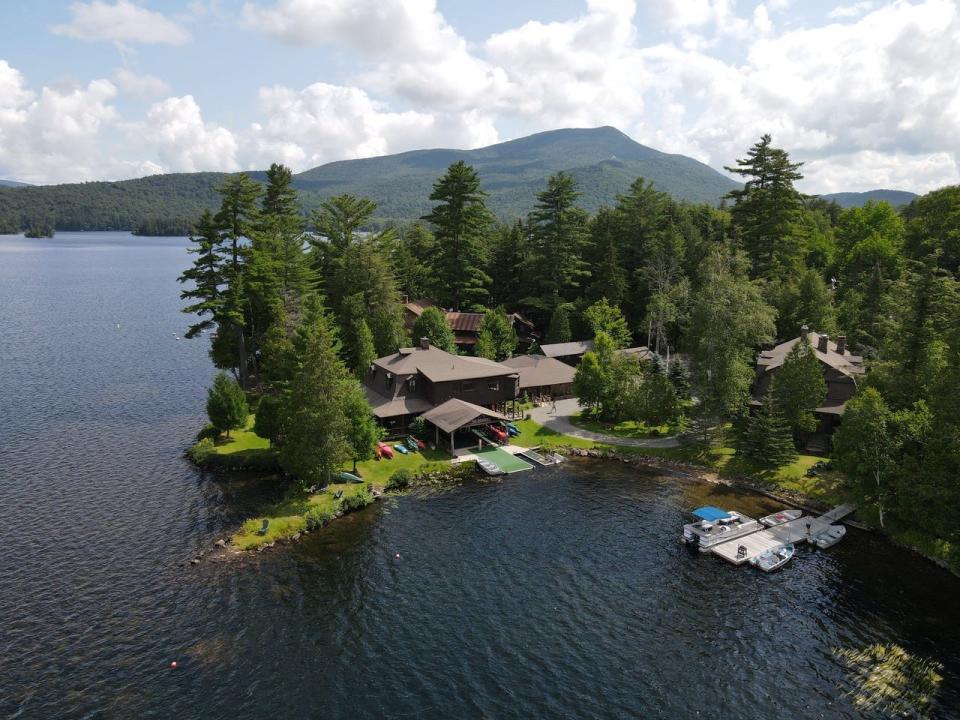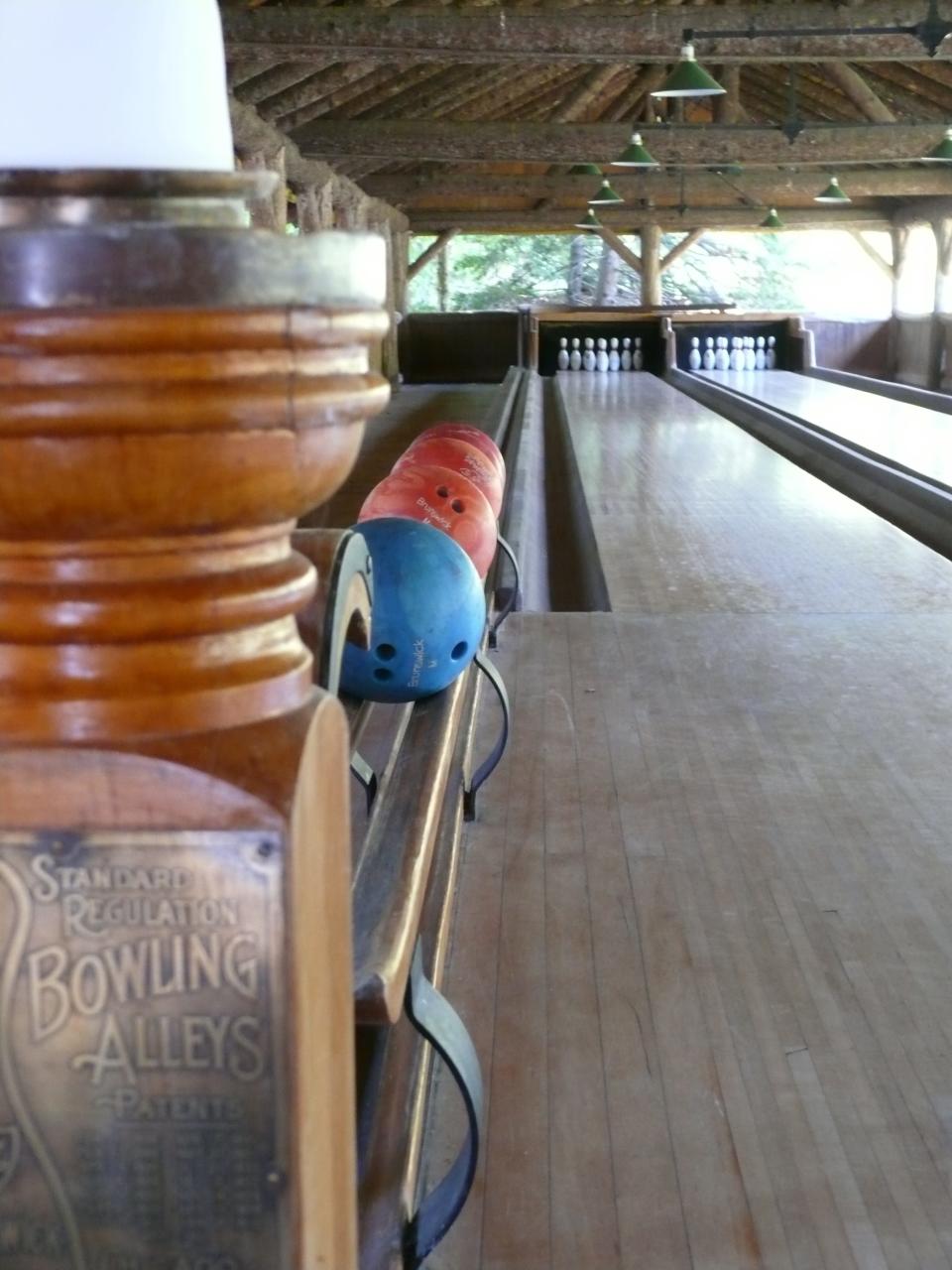Travel: Camping in New York's Adirondack Park is anything but roughing it
Support local journalism: Find offers for new subscribers here: Special Offers — FLORIDA TODAY.
Trick question: what is the largest park in the United States?
No, it’s not Yellowstone, Yosemite, the Grand Canyon or Great Smoky Mountains, or even all four of these natural behemoths together. The largest park is not a national park at all, but Adirondack Park, which, with roughly 6,000 square miles, encompasses one third of the total land area of New York State.
Long a tourist destination, the park, which has been designated a National Historic Landmark, remains pristine, wild and sparsely populated, except for well-tuned tourist destinations such as Lake Placid.
The very rich — the fortunate few to claim names like Vanderbilt, Morgan, Post, Rockefeller and Guggenheim — forged a unique architectural style, and a way of life, in the Adirondacks well before the end of the 19th century. Here, the Great Camps afforded them another opportunity to lavish money on rustic indulgences, where they enjoyed unrivaled privacy while slumming it in well-heeled style.
“You could come up here and disappear,” said Edward Neuburger, a historian who leads tours at White Pine Camp, once the summer White House for President Calvin Coolidge.
“The idea of the Great Camps was to look like you were roughing it but actually living in the lap of luxury. In the early 1900s, if you had a camp in the Adirondacks, you had arrived.”
While the existing Great Camps, for the most part, continue to be the realm of the affluent, a few are open for tours and even overnight stays that do not require a trust fund to afford.
White Pine Camp’s history, in typical Great Camps fashion, abounds with larger-than-life personalities. Originally White’s Pine Camp, it was the retreat of prominent New York banker Archibald S. White and wife Olive, decidedly a party girl.
On 35 lakefront acres, the Whites commissioned New York architect William Massarene in 1907 to design a suitable camp for entertaining amidst the pines. Three years later, Addison Mizner further tweaked Massarene’s original design. Mizner would go on to transform Palm Beach and create Boca Raton, a long way from the Adirondacks.
More: Titusville restaurant named one of Florida's best places for seafood by travel website
More: Derek Gores to create colorful 'mini art center' on Highland Avenue in downtown Eau Gallie
Scores of the rich and powerful and the artistic — from politicians to Broadway dancers — frequented White’s, which featured two designated sites for production of plays, an indoor tennis house, a bowling alley and a Japanese tea house.
In the summer of 1926, a phalanx of Marines and Secret Service agents, plus five telegraph operators and an avalanche of reporters, descended upon the camp, where “Silent Cal” Coolidge, plus wife and two white collies, vacationed from July through September.

Things are quieter these days at the year-round retreat. Visitors can stay at President and Mrs. Coolidge’s adjoining cottages, or at 11 other distinctive cabins, all outfitted in the best handcrafted Adirondack rusticity and so cunningly scattered throughout the sprawling lakefront property that fellow guests are seldom seen or heard.
At rates that range from $95 to $450 a night, the cabins are now within reach of tourists of modest means.
Great Camp Sagamore, the former rustic realm of the Vanderbilts, is also open for overnight stays, as well as for tours through the rambling Swiss-inspired buildings.
“The guest housing of 100 years ago is still the guest housing today,” said historical interpreter Steve McErleane.
Alone in a remote Raquette Lake site, Great Camp Sagamore remains frozen in time, a masterpiece of rustic architecture and the most architecturally sophisticated and influential of the Adirondacks camps.
William West Durant, responsible for building many of the Great Camps, designed Sagamore for his family to epitomize comfort and luxury amidst unspoiled wilderness. Unfortunately, Durant was a better builder than businessman and he was forced to sell the property just after completing it.
Enter Alfred Gwynne Vanderbilt, who enhanced his new purchase by adding the vast hall, known as the Playhouse, for social activities, plus a massive, elegant building for dining with dozens of friends, and more. Margaret, Vanderbilt’s second wife, further fueled refurbishments, including a state-of-the art hydroelectric complex, luxe lean-tos with call buttons to summon servants, and what every outdoorsman needs, a bowling alley.
“It was an audacious response to the reverence for wild places,” said historian Robert Engel, whose great-grandparents were caretakers at Sagamore.
With Margaret as the “hostess of the gaming crowd,” Sagamore enjoyed visits by the likes of Jerome Kern, Gary Cooper, Johnny Weismuller and Howard Hughes.

The camp is now open for two-night “Simply Sagamore” stays that start at $330 and for a breadth of overnight educational programs that cover environmental, cultural, historical and wellness subjects starting at $400 a person. With 1,500 acres of private land at their disposal, guests never feel crowded amidst the 50-building complex.
The same bell that once announced breakfast, lunch and dinner for Vanderbilt guests alerts today’s visitors to repasts.
“The beds, the tables are all the same,” said Engel.
Sagamore and White Pine are both tucked away far from the madding crowd, but they can’t compare with the remoteness of Great Camp Santanoni, the only publicly owned Great Camp. Visitors must walk or bike almost five miles one way to arrive at the camp, or let Newcombe Farm’s genial Percherons horses, Bob and Doc, guide you there aboard a meandering wagon ride through the 12,900-acres that the camp’s first owner, Albany banker Robert Pruyn, amassed.
“Even getting here is an adventure,” said interpretive coordinator Jenn Betsworth, who guides visitors through a National Historic Landmark.
With always plenty of elbow room, visitors explore a complex that reflects an unexpected Japanese influence, thanks to the time Pruyn spent in that country. They wander along the shores of Newcomb Lake, hike to their heart’s content, and in the winter, snowshoe or cross-country sky.
Unlike Sagamore and White Pine, Santanoni does not offer lodging, but its 45 buildings, fine rustic workmanship and its once self-sufficient farm places it among the greatest of the Great Camps.
When a break is needed from the hiking and canoeing, Lake Placid provides all the tourist magnets, plus the Olympic vibes of a town that has hosted two Winter Olympics.
At the Lake Placid Legacy Sites, visitors can ride around banked turns with a professional driver on a dizzying wheeled bobsled or take the gondola up to the terrifyingly high towers where ski jumpers launched themselves during the 1980 Olympics.
The Cliffside Coaster, the longest in North America, puts riders on the path of the 1980 Olympic Sliding Track. The Sky Flyer Zipline glides at 30 miles per hour from the top of one of the jumping towers to land at the base of the complex.
For more leisurely pursuits, hop aboard Raquette Lake Navigation Company’s W.W. Durant to catch sight of privately owned Great Camps still dotting the picturesque body of water.
With more than 23 historical and contemporary buildings on 121 acres overlooking crystalline Blue Mountain Lake, the Adirondack Experience’s open-air campus immerses visitors in the rich history of the area. Visitors can choose from a fleet of vintage wooden crafts, from classic guideboats to canoes, to paddle around the lake.
The legacy of the Great Camps may well be how they shaped Adirondacks tourism. Exclusive camps like Lake Kora continue to welcome affluent guests. The charming and more affordable Hedges has welcomed visitors since 1921.

Most accommodations, from upscale complexes such as High Peaks Resort in Lake Placid to the cozy four-cabin Potter’s Resort by Blue Mountain Lake, exude that laidback character owners of the Great Camps worked so hard to hone. At High Peaks Resort, roughing it means enjoying a glass of bubbly happily handed to guests upon arrival in the expansive lobby decorated with gorgeous vintage canoes, while at Potter’s, it translates into a kayak — and a lake — less than 10 steps from your cabin.
Beyond the Adirondacks, the Great Camps influenced our perception of wilderness tourism, of what we expect in accommodations when we commune with nature, from, as Sagamore’s Engel notes, the rustic hotels of the National Parks to the ski lodges that dot America’s mountains.
Learn more about the Adirondacks
Support local journalism: Find offers for new subscribers here: Special Offers — USATodayNetwork.
This article originally appeared on Florida Today: Some of Adirondack Park's Great Camps are now open to the public

